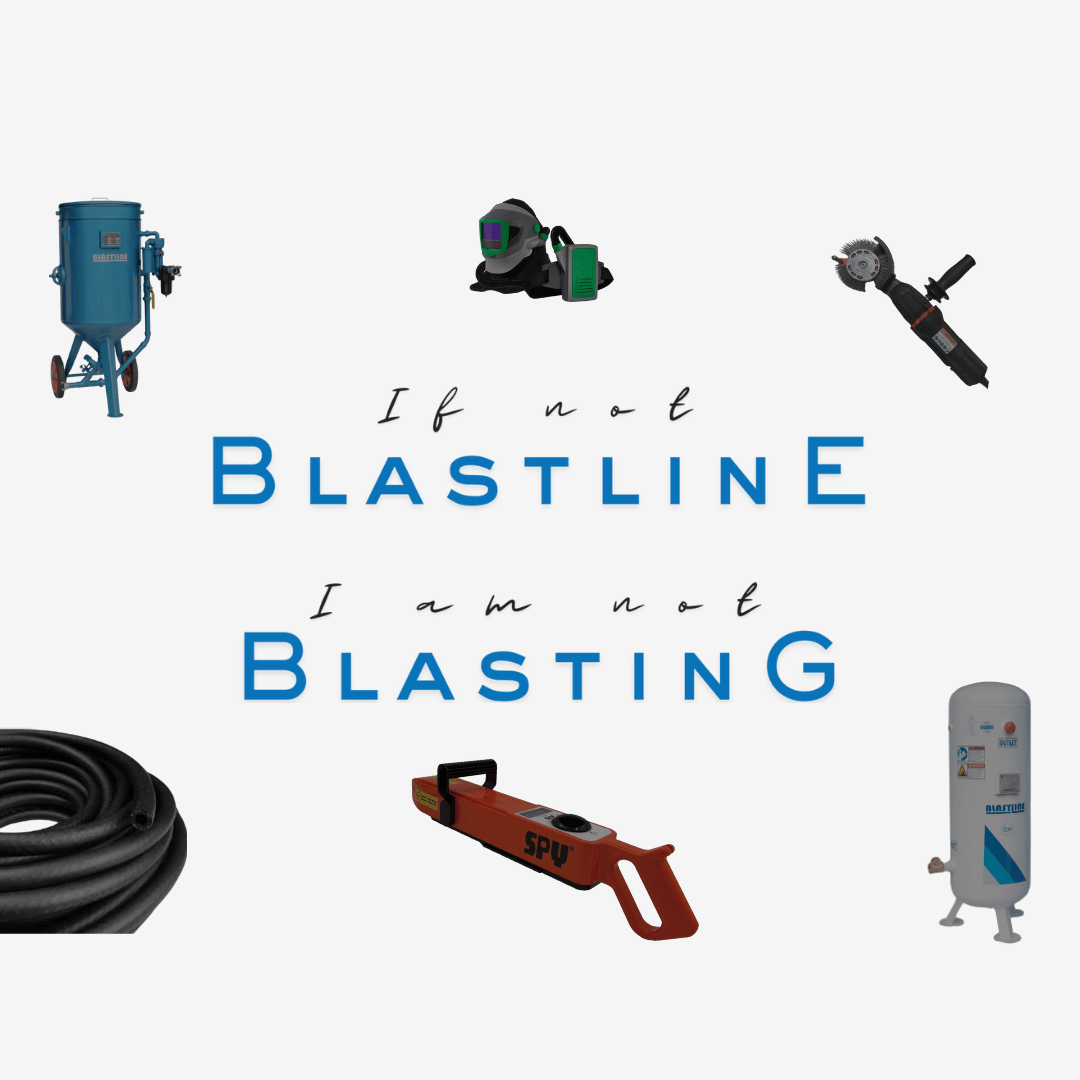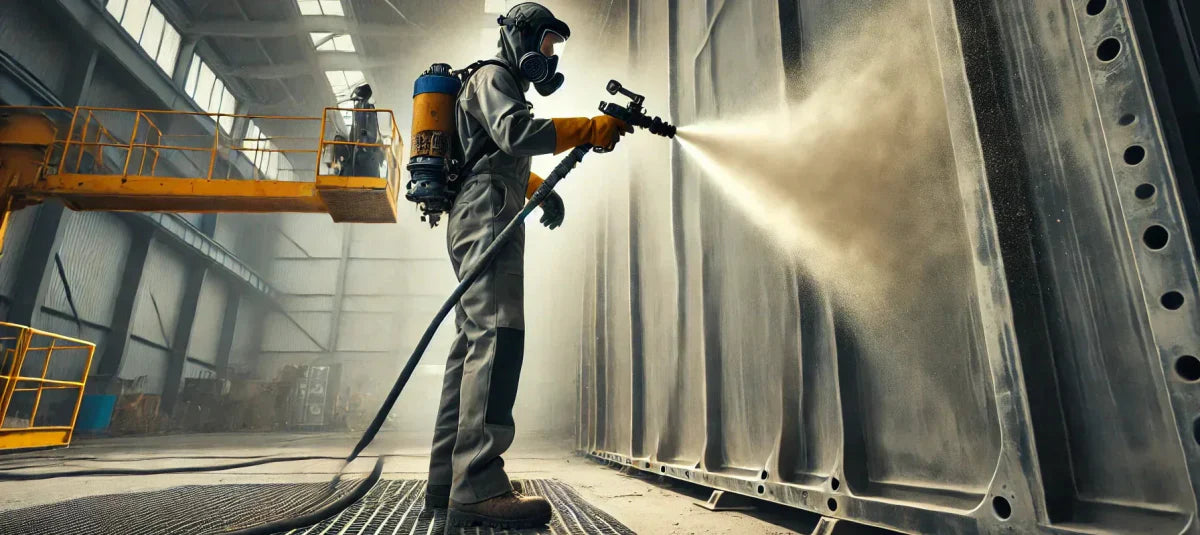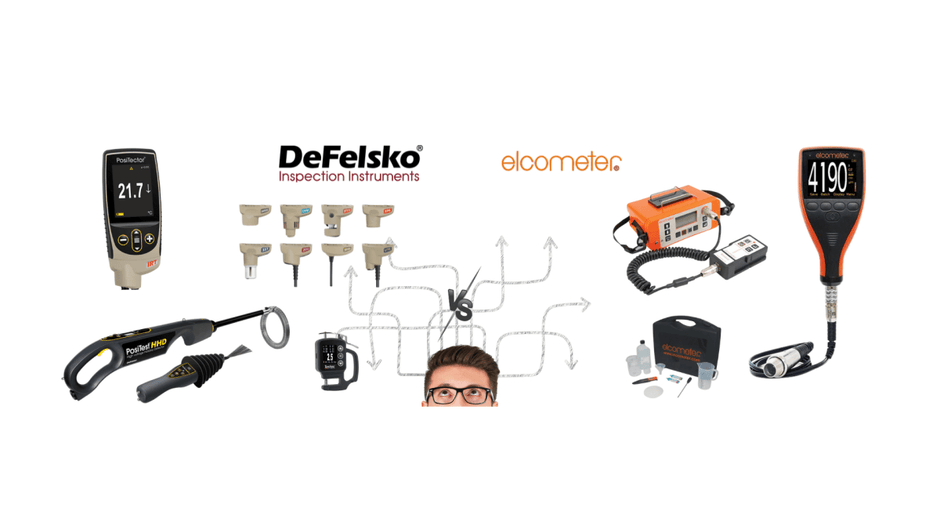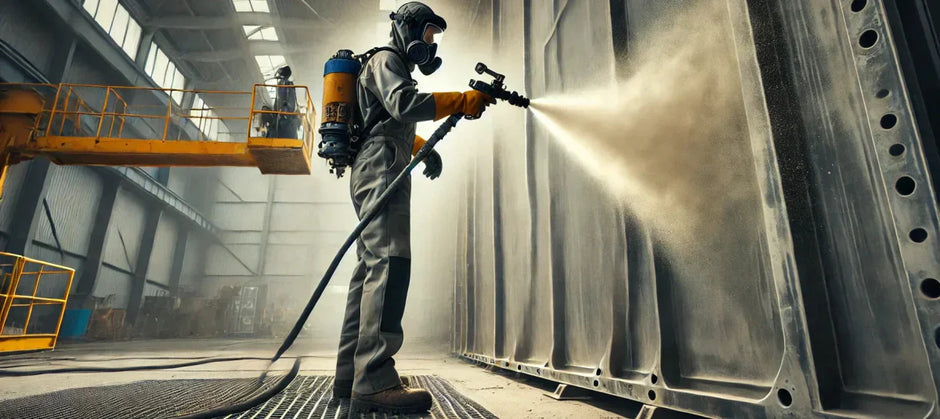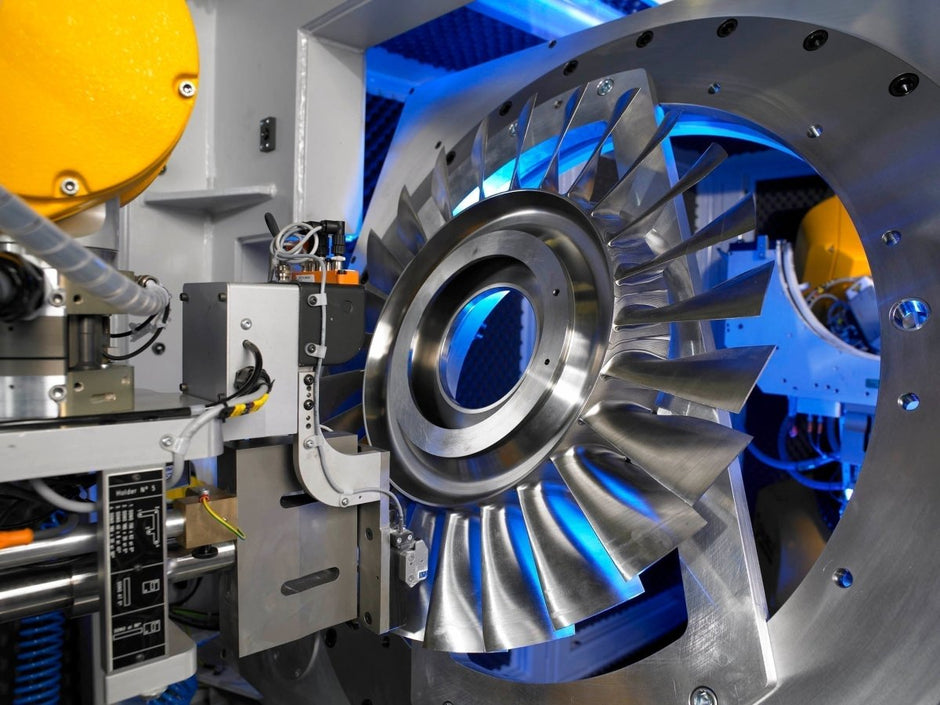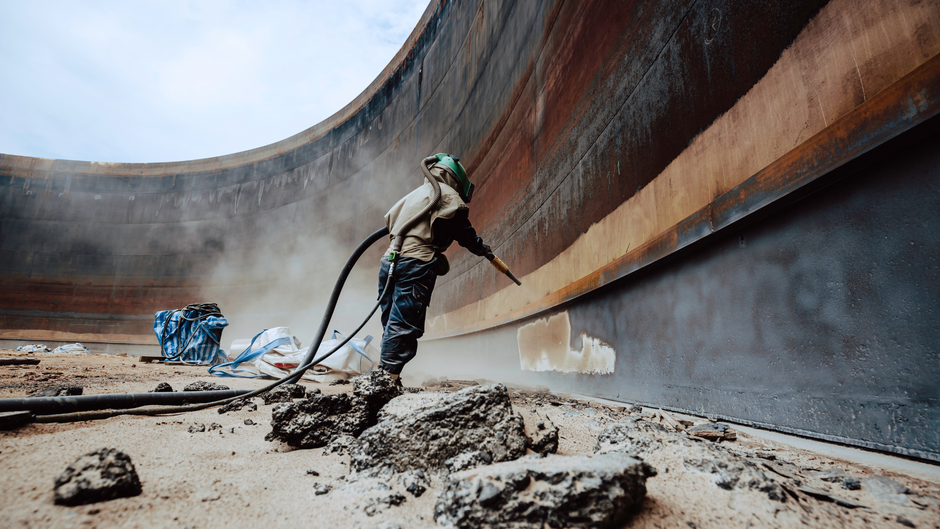Introduction
Proper surface preparation is the foundation of any successful painting or coating job. No matter how high-quality the paint or coating may be, its durability and performance heavily depend on the condition of the surface beneath it. A poorly prepared surface can lead to premature peeling, cracking, or blistering, ultimately compromising the structural integrity and aesthetic appeal of the finished project.
Sandblasting, also known as abrasive blasting, is one of the most effective methods for surface preparation, ensuring that contaminants such as rust, old paint, grease, and scale are thoroughly removed. This process creates an ideal surface profile, allowing the paint or coating to adhere properly and form a strong, lasting bond. Whether painting metal structures, industrial machinery, pipelines, or even concrete surfaces, proper sandblasting ensures that coatings can withstand environmental factors like moisture, temperature fluctuations, and chemical exposure.
By investing time in thorough surface preparation, contractors and professionals can significantly extend the lifespan of their coatings, reduce maintenance costs, and enhance the overall quality of their work. This guide will walk you through the complete sandblasting process, detailing essential equipment, best practices, and safety measures to achieve flawless, long-lasting results.
Why Is Surface Preparation Important before painting?
Before diving into the sandblasting process, it’s crucial to understand why proper surface preparation is essential for a long-lasting and high-quality paint job. Simply applying paint or a protective coating to an unprepared surface may seem sufficient at first, but over time, poor adhesion, uneven application, and premature failure can lead to costly maintenance and repairs. Effective surface preparation ensures that coatings not only look good but also perform well under demanding conditions.
-
Enhances Coating Adhesion – Paint or protective coatings need a clean, roughened surface to bond effectively. A properly blasted surface removes any barriers, such as rust, old paint, and mill scale, providing the necessary mechanical profile for coatings to grip onto. Without this essential step, the coating may fail to adhere properly, leading to bubbling, peeling, or chipping over time.
-
Removes Contaminants – Industrial surfaces are often covered with contaminants such as dirt, grease, oils, moisture, and oxidation, all of which can interfere with paint adhesion. Sandblasting efficiently removes these unwanted substances, ensuring a clean foundation that prevents defects such as fisheyes, uneven drying, or chemical reactions between the coating and underlying material.
-
Increases Durability – A well-prepared surface contributes to the long-term durability of the coating system. When the paint adheres properly, it can better resist environmental stressors like extreme temperatures, humidity, chemical exposure, and physical wear. This means fewer touch-ups, extended lifespan, and lower maintenance costs for industrial and commercial applications.
-
Prevents Coating Failure – Inadequate surface preparation is one of the leading causes of premature coating failure. When paint is applied over a poorly prepped surface, it may look fine initially but will soon begin to deteriorate. Issues such as flaking, blistering, corrosion, and chalking can arise due to weak adhesion and trapped contaminants. Proper sandblasting removes these risks, allowing the paint or coating to perform as intended for years to come.
Step-by-Step Guide to Sandblasting for Surface Preparation
Step 1: Planning & Safety Precautions
Before beginning the sandblasting process, you need to take the necessary precautions:
-
Wear Proper Personal Protective Equipment (PPE):
- Respirator or air-supplied hood
- Safety goggles
- Protective gloves
- Coveralls and sturdy boots
-
Select the Right Abrasive Media:
- Aluminum oxide – Ideal for heavy-duty blasting
- Glass beads – Provides a smoother finish
- Steel grit – Aggressive and reusable option for tough surfaces
- Garnet – Low-dust alternative with good cutting power
- Ensure Adequate Ventilation: If working indoors, use exhaust fans or dust collectors to prevent inhalation hazards.
- Mask Off & Protect Surrounding Areas: Cover areas that should not be blasted with protective sheeting or tape.
Step 2: Setting Up the Sandblasting Equipment
- Check the Air Compressor: Ensure it has sufficient PSI (pounds per square inch) and CFM (cubic feet per minute) for the job.
- Inspect the Blast Hose & Nozzle: Make sure they are free from damage or clogs.
- Adjust the Blasting Pressure: Lower pressures (50-80 PSI) for delicate materials and higher pressures (90-120 PSI) for tougher surfaces.
- Test on a Small Area: Before starting on the entire surface, do a test blast to confirm the right pressure and media selection.
Step 3: Executing the Sandblasting Process
- Maintain a Proper Distance: Hold the blast nozzle 6-12 inches from the surface.
- Use a Consistent Motion: Move the nozzle in smooth, overlapping strokes to avoid uneven blasting.
- Monitor Surface Profile: Ensure you achieve the desired anchor pattern for optimal paint adhesion.
- Check for Cleanliness: Inspect for remaining rust, debris, or uneven blasting marks.
Step 4: Post-Blasting Cleanup & Inspection
- Remove Dust & Residue: Use compressed air or a clean cloth to clear away loose particles.
-
Perform a Surface Cleanliness Test:
- Use a white-glove or tape test to check for residual dust.
- If necessary, reblast or wipe down the surface.
- Apply Primer or Coating Immediately: To prevent flash rusting, apply the first coat as soon as possible after blasting.
Conclusion
Proper surface preparation through sandblasting is the key to achieving a high-performance, long-lasting paint or coating job. A well-prepared surface ensures that coatings adhere properly, forming a strong bond that resists peeling, cracking, and premature failure. Without thorough preparation, even the most advanced coatings can fail, leading to costly repairs, frequent repainting, and potential structural damage.
By following the steps outlined above, professionals and contractors can significantly enhance coating durability, reduce maintenance costs, and improve overall efficiency. Whether working on industrial machinery, pipelines, metal structures, or large-scale infrastructure projects, investing in proper sandblasting techniques can extend the lifespan of coatings, protect against environmental damage, and ensure compliance with industry standards.
For those looking to optimize their surface preparation process, using high-quality sandblasting equipment and abrasives is essential. The right tools not only improve efficiency but also enhance safety and precision. Explore our website to discover a wide range of premium sandblasting equipment, abrasives, and accessories tailored to meet the needs of professionals and businesses in various industries. Equip yourself with the best tools today and achieve outstanding results on your next project!



